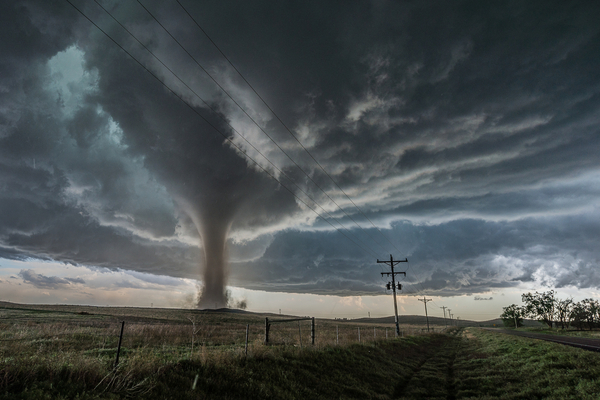December marks the first month of meteorological winter across the Northern Hemisphere, and people are busy gearing up for the holidays. Many people are focused on when snow will transform their yards into a winter wonderland, but this month can often bring violent severe weather.
Although December is not the most prolific month in terms of severe storm activity, forecasters at AccuWeather say severe weather can happen year-round if the right atmospheric ingredients are in place. “While it’s not unusual to experience severe thunderstorms in the month of December, it is certainly much less frequent than other months of the year,” AccuWeather Director of Forecasting Operations Dan DePodwin said. “That’s because we’re missing one of the key ingredients for severe weather most of the time during December, and that’s the warm, moist air near the surface.”
The basic ingredients required for severe weather to form are unstable air, a force in the atmosphere that causes the unstable air to rise and moisture. And the Gulf of Mexico is one of the country’s biggest suppliers of moisture for thunderstorm development across the central United States.
But during the months of meteorological winter, December through February, the moisture from the Gulf of Mexico doesn’t spread across the country as much as it does during the spring, summer and fall. This is why severe weather outbreaks are less frequent. On the other hand, areas such as the lower Mississippi Valley and Gulf Coast states continue to see an influx of moisture at times in the winter months. This is due solely to the proximity to the Gulf of Mexico. And thus, these areas are hotspots for severe weather, even during the winter months.
“It’s a pretty small zone in December,” DePodwin said, as he described the corridor of the U.S. most likely to experience severe weather this time of year. “[It’s] basically the eastern part of Texas, into Louisiana, Mississippi and Alabama, even into parts of Arkansas and even Missouri.” It’s important to note that severe weather can and has occurred in states outside of the most common area during the final month of the year.
According to the Tornado Archive, since 1875, there have been over 2,000 confirmed tornadoes in 38 different states across the U.S. during December, according to data provided by Tornado Archive. States such as Hawaii, Oregon, Idaho, Massachusetts and Rhode Island are among the nearly 40 states that have reported twisters in December.
The U.S. has experienced only a handful of tornado outbreaks during the final month of the year. Yet no December on record has had as many tornadoes in the United States as 2021, during what some AccuWeather experts called a “ridiculously active” month for severe weather. According to NOAA, 193 twisters were confirmed last December. The combination of higher-than-average temperatures, ample moisture from the Gulf of Mexico and a powerful jet stream over the center of the country fueled last year’s multiple historic severe weather events.
In the first tornado outbreak of December 2021, more than 100 tornadoes touched down on the night of December 10 into December 11. Those twisters wreaked havoc across nine states, leaving many towns unrecognizable and claiming the lives of at least 90 people. The second major outbreak occurred on Dec. 15 when an additional 57 tornadoes were spawned across the Midwest.
Mother Nature attempted to thwart Santa’s lofty sleigh flight when a tornado outbreak occurred on Christmas Day 10 years ago. According to the National Centers for Environmental Information (NCEI), in 2012, 51 tornadoes struck from eastern Texas to Alabama. The number, which still stands as the most tornadoes ever recorded on Dec. 25, exceeds the previous 12 in 1969, according to SPC data dating back to 1950. Luckily, despite all of the damage from the Christmas Day outbreak in 2012, there were just minor reports of injuries and no deaths.
Severe weather, including tornadoes, is often at its lowest during the winter months but looking back over the past decade, it’s evident that twisters can still form and be just as devastating as any churning during the more active months in a given year.
—
Photo Credit: Cammie Czuchnicki / Shutterstock.com
